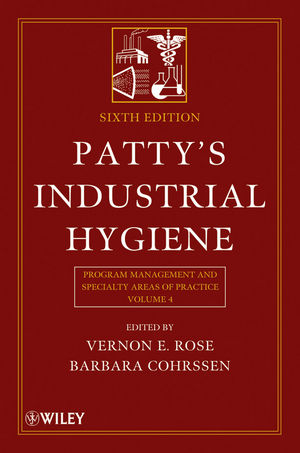
Industrial hygienists play a vital role in helping organizations provide a healthy and safe work environment for their employees as well as the surrounding community at large. Among their many responsibilities are identifying, managing and ultimately controlling the risks associated with natural disasters, terrorism events and workplace accidents including biological, radiological and chemical exposures.
According to OSHA, more than 30 million American workers are exposed to hazardous chemicals in their workplaces. With this alarming number in mind, the Hazard Communication Standard (HCS) was developed by OSHA in the 1980s to help safety professionals ensure that both workers and employers are informed about safety hazards and the appropriate protective measures to take when dealing with hazardous chemicals.
The development of the HCS has had a major impact on the safety of workers across the country. Chemical information is now readily available in workplaces and direct access to material safety data sheets (MSDSs) for hazardous chemicals, along with the provision of labels, has become a standard for safety professionals and industrial hygienists alike. MSDSs are not just used as a protective measure, but also to select less hazardous substitutes in an effort to create the safest work environment possible. MSDSs have evolved into resources for several different aspects of a safety program.
In as much as HCS, and specifically MSDSs, aim to help keep workers safe, they have created a costly administrative headache for those charged with complying with the standard. In fact, today, more than 20 years after the MSDS formally came on the scene, compliance remains an issue in the U.S. In 2006, OSHA named HCS as its second most violated standard, with more than 6,000 violations nationwide.
The paper trail
Perhaps the primary reason MSDS compliance is such a headache is the monotonous management of large amounts of paper documents. Paper-based MSDS management systems can be costly, cumbersome and they require time and resources that otherwise could be utilized for more important safety and workplace issues. Even if you don’t have an extensive MSDS library, consider the time employees spend requesting MSDSs from suppliers, managing all of the various versions and revisions, distributing MSDSs to the appropriate locations and workstations, managing multiple binders, and so on. This process can take valuable time away from other more important safety tasks and business issues. A recent study suggests that safety professionals spend 78 percent of their time each day completing tedious compliance reporting and record management tasks.
A paper-based system doesn’t seem like a huge expense on the outside, however industry estimates suggest that paper-based systems can cost as high as $15 per MSDS document, per year. It doesn’t take too many MSDSs for that cost to really affect the bottom line. Not to mention the potential lost production time, workers’ compensation claims, non-compliance penalties, possible litigation fees; it’s easy to see why more and more companies have or are looking at implementing an electronic MSDS management system.
On-demand management
With the Internet playing a part in our everyday lives, moving from a paper-based system to an Internet-based system seems like an obvious choice and is for numerous companies across the U.S. The return on investment is quickly realized and compliance becomes less of an issue. Well-designed electronic systems benefit the user and employer by offering instant access to MSDSs, saving time, cutting costs, satisfying the “readily accessible” requirement; the end result is that the workplace is a safer environment.
With a paper-based management system, documents can really only be easily indexed by one or two words, and consequently searched by one word (e.g., product name, manufacturer, date, etc.). This means that once an MSDS is indexed by that word, it can only be located that way unless a cross-index is created and maintained. In a time of crisis, a paper-based system can become a costly one.
The cost benefits of electronic MSDS management are not always apparent immediately. Most services give you the ability to search for an MSDS based on the multiple indexing capabilities offered. This gives users numerous fields to choose from when searching, making it easier to locate an MSDS in a matter of seconds — risk and liability is significantly lowered. In an emergency situation, this capability is invaluable.
Another benefit of electronic MSDS management is version management. The time it takes to go to multiple binders or filing cabinets and replace MSDSs in an effort to stay compliant and up-to-date can easily be reduced by having all of your MSDSs in one, easy-to-access place. Not only does it save you time, in the end it saves you money.
The savings gained from an electronic MSDS management system are the most obvious benefits. Using the estimates mentioned earlier, a 2,000 MSDS inventory would cost a company upwards of $30,000 annually to manually maintain and deploy MSDSs. Think about how many times an MSDS is misfiled or lost, necessitating a replacement. Not to mention, it’s virtually impossible to monitor how current your MSDS inventory is using a paper-based system. An electronic system that’s tied to a large MSDS database will allow for almost instantaneous updates or replacements with considerably less time and effort. And, with a click of a button, you can see how compliant you are, making MSDS management and safety efficient and cost-effective.
Lower your risks
Understanding, identifying and controlling the risks associated with health and safety in the workplace is not a small job, and MSDS management is just a part of it. Electronic MSDS management is a great tool for lowering the risks associated with hazardous chemicals, and has many benefits for the overall safety program of an organization.




